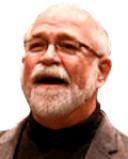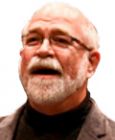Coronavirus Disease 2019
Putting the Pieces Together
In uncertain times, play tests patience and ingenuity.
Posted April 23, 2020
Puzzle solvers prize difficulty and challenge over ease. Deep, absorbing play draws them not because it is easy, but because it is precisely the opposite.
In the last two weeks, three friends, hunkering down during this pressing national health crisis, sent me pictures of vast puzzles they had recently completed. One of them, a man who had spent a busy career teasing apart intricate legal questions, put together a thousand-piece 3D portrait of a mischievous cat. It was his first puzzle for play in 50 years. Another, a philosopher who writes about aesthetics and ethics, unpacked an old puzzle and, before beginning, she “debated the morality of taking apart pieces that are still stuck together.” And a third, intriguingly, sent without comment a shot of a completed puzzle-print of Gustav Klimt’s sensuous, painting “The Kiss.”
Klimt made a practice of extracting nearly all the distinguishing visual “information” from large areas of his canvases. The striking result shocked convention at the time and continues to draw our eyes with its audacity. Almost nine-tenths of the area of this famous symbolist work is given over to glimmering abstraction. Two figures embracing figures appear wrapped in the shimmering robe that dominates the painting. The lovers float in gold and platinum the way a Pantocrater looms on the ceiling of a Byzantine basilica, but in an erotic rather than sacred frame. In the southwest corner of the canvas, the figures kneel in a blossoming but unvarying meadow. Another abstraction.
I first saw the painting in a museum in Vienna many years ago, and of that gallery experience, what I remember most was my reluctance to let it go; the closer I moved in to see it more clearly, the less conventional sense it made.
The painting of “The Kiss” seems as if it were painted purposely to test the tactile intelligence and spatial memory of the puzzle-solver. It’s a puzzle turned into a puzzle. It breaks the informal rules of puzzling. Normally puzzlers follow the cues of color and form. They guess at the composition of the finished work. They compare a mental view to the picture on the box top. They feel the way the pieces fit. They reorganize the random into patterns. Where does this or that piece fit when one piece looks much like another? But this painting’s radical simplicity delights the big brains of the most devoted puzzlers, testing their patience as well as their ingenuity.
Taking this approach to a logical and startling conclusion, some puzzlers will go so far as to begin by turning all the pieces over on a glass tabletop, working only with the nonrepresentational shapes on the featureless cardboard side. The completed image will be visible only from below. This play is high mischief.
It takes a droll sense of kitsch to turn a masterpiece into a tabletop game. Puzzle designers adapted several other famous artworks with similar sass: Vermeer’s “Girl with a Pearl Earring,” for instance, Whistler’s portrait of his mother, and perhaps most notoriously Jackson Pollock’s abstract expressionist painting, “Convergence.”
When this puzzle made of Pollock’s painting appeared in 1965 it sold in the hundreds of thousands because of the way it traded on the very phenomenon that draws our eyes to the painter’s creation in the first place; the fractal self-similarity of the composition.
No matter where the eye travels across one of his abstract canvases, Pollock’s paintings reveal similar predictable elements in the apparently random drips, spatters, and swirls. This predictable but purposeful unpredictability draws us in in the same way that the chaotic regularity of a waterfall, the repetitive cracks in a dried mudflat, or the tessellations in flooring will compel and hold our gaze.
An unfinished puzzle will draw kibitzers like a magnet, a pertinent social bonus in this interval of isolating contagious disease. They look for an opportunity. They will spot the place where a stray piece belongs. They can’t keep the secret. The ruckus draws others in. Even when no one is playing, the incomplete picture sits irresistibly on the coffee table, slyly demanding just a minute or two. As a jigsaw puzzle nears completion, options narrow, pieces fall into place more quickly. Keen anticipation increases the puzzle’s pull. Puzzle-solving is a pleasurable contagion.
Jigsaw puzzles require players to recognize patterns from the evidence of obscure clues, a general human need to bring order from chaos. Thinkers as unlike as orthopedic trauma surgeons and writers of crime novels often describe their tasks similarly as “fitting the pieces together.” We are reassured when the detective resolves the mystery. Things are always falling apart after all, and it is satisfying when the power of the mind puts things back together.
Jigsaw puzzles began as handcrafted and hand-sawn “dissected maps” of the world, a hands-on tool of geography education. The puzzle-making and puzzle-selling business would not take off, though, until mass manufacturing methods made the game available to millions.
Since then, the game’s popularity has risen and fallen inversely with national fortunes. Puzzles sold best when idled people most needed distraction. They first sold like hotcakes just after the now nearly forgotten economic crisis of 1907. Puzzle popularity peaked again in 1933 in the nadir of the Great Depression, the second-worst economic collapse in the nation’s history. And naturally so. Besides escape, the game offers a reassuring real-time resolvable problem. Play offers comfort, too. Especially in uncertain times, players need to feel how the pieces fit.
And in these most uncertain times, microbiologists and immunologists deploy the spatial and visual intelligences of puzzle solvers. Those who investigate the “structural genomics” of infectious disease frame their urgent fight against the novel coronavirus explicitly this way.
One of the researchers, Karolina Michalska, a crystallographer at the University of Chicago, aims X-rays at coronavirus proteins to generate a three-dimensional model of the pathogen. On the screen, she turns the picture of the virus this way and that, pulling its chemical bonds apart, and reassembling them. So that the researcher can better see the individual components of the virus, the computer renders protein spikes and RNA spirals in bright fuchsia, cyan, and cerise. Before she and other scientists can find a way to kill this virus, they need to see how its parts fit together. She looks for the spot where the virus may be weakest and most vulnerable to a vaccine. She looks for an opportunity. Her task is a puzzle in reverse.




